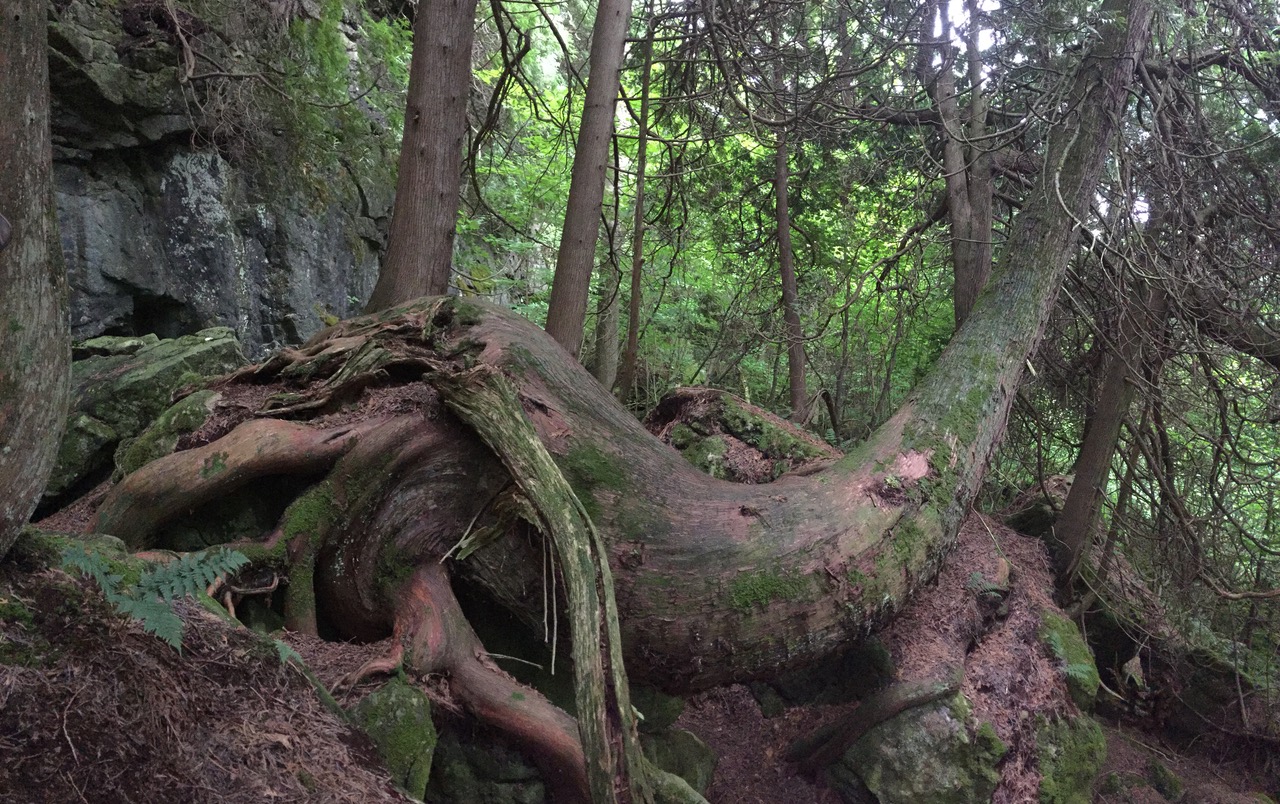NIAGARA ESCARPMENT BIOSPHERE NETWORK BLOG
23/08/2022
Small but Mighty
23/08/2022

When it comes to the natural world, “value” is something we have a hard time defining. The human centric mentality of “If we can’t use it, what good is it?” still prevails. More and more research points to the fact that an organism’s true “value” is determined by its place in the ecosystem. How many other plants and animals does it support? What benefits does it offer the surrounding organisms and the ecosystem overall? Old growth forest, with the oldest trees being hundreds to thousands of years old, are the most effective at retaining carbon and anchoring a healthy, biodiverse ecosystem.
In southern Ontario, the term “old growth forest” is not commonly used, as most of our forests were logged well over a century ago. The Niagara Escarpment however, plays host to some of the oldest trees in the province, and the country. They are not what most would consider old growth, like the giant redwoods of the west coast, but rather, they hide in plain sight, unassuming in their cliffside homes. The Niagara Escarpment’s ancient cedars are typically no more than four to ten feet tall, with trunks about as wide as an arm or a leg, but are often aged between 300 to 1,300 years old. Since their discovery in the 1990s, great efforts have been made to preserve this surprising old growth forest. At risk from the activities of recreational rock climbers and others, researchers and conservation groups have worked together with the public to educate and offer alternatives that allow these amazing trees to continue to thrive amongst the hustle and bustle of today’s outdoor enthusiasts that flock to the Escarpment’s limestone cliffs every summer.
For more about Ontario’s hidden old growth forests and the work being done to preserve them, please visit:
— Nathan Greenlay